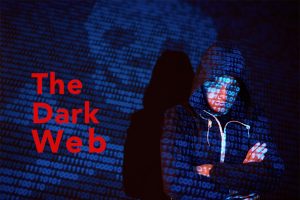The digital signature encryption is very safe as it enhances the transparency of online interactions and develops reliability between the customers, business partners, and vendors. The digital signature encryption is very helpful to identify and verify individuals and increase the integrity of the message.
How Do Digital Signatures Work?
Digital signatures function by proving that a digital message or document was not modified either intentionally or unintentionally, from the time it was signed. Digital signatures are based on asymmetric cryptography; they do this by generating a unique digital code of the message or document and encrypting it using the sender’s private key. The digital code generated is unique and non-transferable to the message or document, and altering any part of it will entirely change the digital code.
Then the message or document is digitally signed and sent to the recipient. The recipient then generates their own digital code of the message or document and decrypts the sender’s digital code, which is included in the original message using the sender’s public key. The recipient compares the digital code they generate against the sender’s decrypted digital code; if they match, the message or the document has not been changed then the sender is authenticated.
How Can You Say That A Digitally Signed Document Hasn’t Been Changed?
For a digital signature forgery to happen, the attacker should have to get the signatory’s private key, and this is very difficult. If this happens the user could revoke the trust in the key that has been compromised, with another different key, in the power of the Certification Authority (CA) which issues the certificates, and strict security protocols protect that. If someone is going to use a digital signature they can rest assured and trust it to do any procedure: it is complicated for someone to falsify it, and if so, it is possible to solve the issue.
The digital signature encryption is the safest because the receiver will be sure of the sender’s identity and the arrived message. The digitally sign documents and certificates to encrypt offer the below-mentioned assurances about document transmissions:
The receiver will solely have access and can read the message any other unauthorized persons cannot read it. This level of security is assured from encryption.
Tampering the message is highly impossible. The data cannot be changed, added, edited, modified, or deleted without your intervention. The document’s digital signature encryption offers this assurance.
The partners who send the documents are genuinely who they claim to be. In the same way, when the partners receive the documents which are signed by you, they can be confident enough that the documents came from you only. The document’s digital signature encryption gives this assurance.
The partners who sent the documents cannot claim or tell that they didn’t send those. This is also referred to as non-repudiation of origin. The document’s digital signature encryption provides this assurance.
Whomsoever the partners are once you send the documents to them they cannot claim that they did not get them i.e., they cannot deny that they didn’t receive them. This is also referred to as non-repudiation of receipt. The document’s digital signature encryption acknowledgment provides this assurance.
If one wants the recipients like the partners of one’s documents to be able to verify the authenticity of the digital signature then one must get a digital certificate from a reputable Certification Authority (CA). After downloading and installing the certificate, then they will be able to use the ‘Sign’ and ‘Encrypt’ buttons on the mail client to encrypt and digitally sign the emails. This is quite helpful in a business scenario, as it assures the recipients that it was genuinely sent by you and not by some other impersonator.
Signature Algorithm
For the creation of digital signatures, the signature algorithms such as the email programs will create a one-way digital code of the electronic data that is required to be signed. After this, the signature algorithm then starts the process of encryption, and then the digital code value gets encrypted using the private key i.e., the signature key. Now, the encrypted digital code along with the other information such as the hashing algorithm is the actual digital signature. This digital signature is attached with the data and then sent to the verifier. The main reason for encryption of the digital code but not the entire message or the document is that a digital code function converts any arbitrary input into a much smaller fixed-length value. This also saves a lot of time instead of the long message getting signed a smaller digital code value has to be signed and additionally the hashing is much quicker than signing.
Verification Algorithm
The verifier receives the digital signature along with the information. After that, it uses the verification algorithm to process the digital signature and the verification key i.e. public key, and then some value gets generated. It is applicable for a similar digital code function on the received data and also generates a digital code. Now, the digital code value and the output of the verification algorithm will be compared. If they both are equal, then the digital signature will be valid else it will be invalid.
The digital signature encryption is one of the best authentication tools which are employed all over the Internet. The digital signature algorithm is very crucial for creating a secure and safer environment, which is driven by speed, time, and accuracy.







